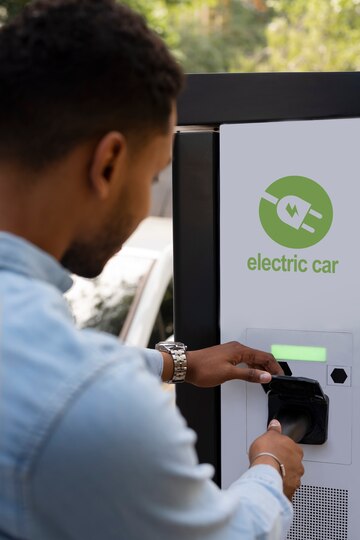Introduction
Electric vehicles (EVs) are increasingly becoming a popular choice among consumers and businesses as a more sustainable alternative to traditional gasoline-powered cars. With advancements in technology and growing environmental concerns, EVs offer numerous benefits. However, their adoption also comes with certain challenges. This article explores the benefits and challenges associated with adopting electric vehicles and their impact on the automotive industry and society.
The Benefits of Electric Vehicles
- Environmental Impact
One of the most significant advantages of EVs is their reduced environmental impact compared to internal combustion engine vehicles. EVs produce zero tailpipe emissions, which helps decrease air pollution and greenhouse gas emissions. By transitioning to electric vehicles, we can contribute to cleaner air and combat climate change. Example: According to the U.S. Environmental Protection Agency (EPA), an average EV can reduce carbon dioxide emissions by over 50% compared to a gasoline-powered vehicle, depending on the electricity source used for charging. - Cost Savings on Fuel and Maintenance
Electric vehicles offer cost savings in terms of fuel and maintenance. Charging an EV is generally cheaper than purchasing gasoline or diesel, and the cost of electricity is often lower than that of fossil fuels. Additionally, EVs have fewer moving parts compared to traditional vehicles, which means lower maintenance costs and fewer repairs. Example: A report by the International Council on Clean Transportation (ICCT) found that EV owners can save between $800 and $1,000 annually on fuel and maintenance compared to conventional vehicle owners. - Energy Efficiency
EVs are more energy-efficient than internal combustion engine vehicles. Electric motors convert a higher percentage of energy from the battery to power the vehicle, whereas traditional engines lose much of the energy in the form of heat. This efficiency translates to better performance and longer driving ranges for electric vehicles. Example: The U.S. Department of Energy estimates that electric vehicles are approximately three times more efficient in converting energy from the battery to power compared to gasoline engines. - Government Incentives and Support
Many governments offer incentives and subsidies to promote the adoption of electric vehicles. These incentives can include tax credits, rebates, and reduced registration fees. Additionally, some regions provide access to carpool lanes and free parking for EVs, further encouraging their adoption. Example: The U.S. federal government offers a tax credit of up to $7,500 for the purchase of qualified electric vehicles, depending on the battery capacity and manufacturer.
Challenges of Adopting Electric Vehicles
- Limited Charging Infrastructure
One of the major challenges for EV adoption is the availability of charging infrastructure. Although the number of charging stations is increasing, it may still be insufficient in some areas, especially in rural or less developed regions. Limited charging options can impact the convenience and practicality of owning an electric vehicle. Example: According to the Alternative Fuels Data Center (AFDC), the U.S. has over 150,000 public charging stations, but the distribution is uneven, with higher concentrations in urban areas compared to rural regions. - Range Anxiety
Range anxiety refers to the concern about the distance an EV can travel on a single charge and the availability of charging stations along the route. Despite improvements in battery technology, some consumers remain concerned about running out of battery power before reaching a charging station. Example: While many modern EVs offer ranges of over 250 miles on a single charge, early adopters and some lower-cost models may have shorter ranges, contributing to range anxiety. - Higher Upfront Costs
Electric vehicles generally have a higher upfront cost compared to traditional vehicles, primarily due to the cost of the battery. Although the total cost of ownership may be lower over time due to fuel and maintenance savings, the initial purchase price can be a barrier for some consumers. Example: According to Kelley Blue Book, the average price of a new electric vehicle in the U.S. is higher than the average price of a new gasoline-powered vehicle, though prices are gradually decreasing as technology advances. - Battery Degradation and Disposal
The performance of electric vehicle batteries can degrade over time, affecting the driving range and efficiency of the vehicle. Additionally, the disposal and recycling of EV batteries pose environmental and logistical challenges. Proper battery management and recycling infrastructure are essential to address these issues. Example: Research by the National Renewable Energy Laboratory (NREL) indicates that EV batteries can experience a gradual decline in capacity over time, though many batteries retain over 80% of their capacity after 100,000 miles.
The Future of Electric Vehicles
The future of electric vehicles looks promising, with ongoing advancements in battery technology, charging infrastructure, and vehicle design. Innovations such as solid-state batteries, faster charging solutions, and improved energy density are expected to enhance the performance and affordability of EVs. Governments and businesses are also investing in the development of sustainable transportation solutions, further supporting the growth of the electric vehicle market.
Conclusion
Electric vehicles offer significant benefits, including reduced environmental impact, cost savings, energy efficiency, and government incentives. However, challenges such as limited charging infrastructure, range anxiety, higher upfront costs, and battery management need to be addressed to support widespread adoption. As technology continues to advance and infrastructure improves, electric vehicles will play a crucial role in shaping the future of sustainable transportation.


